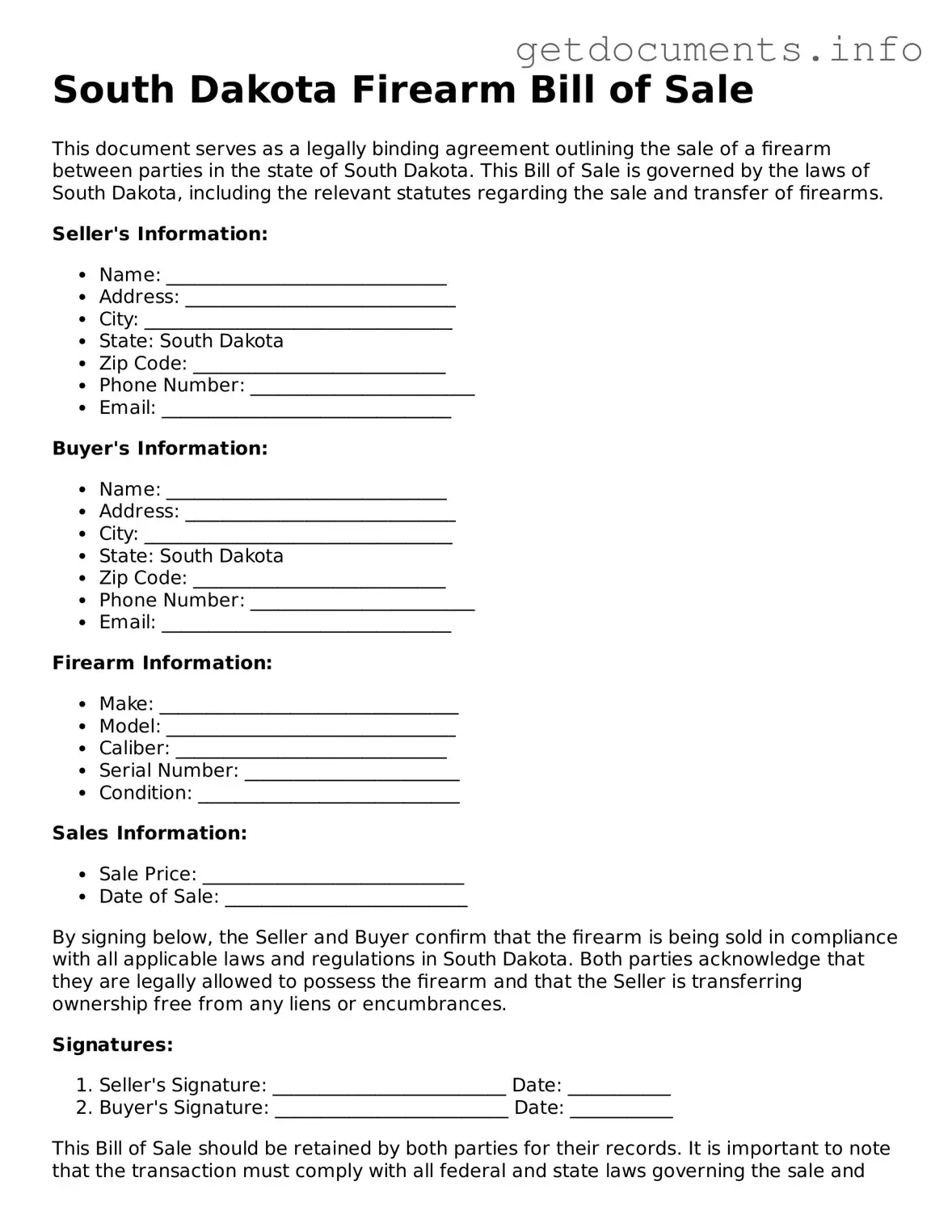Free Firearm Bill of Sale Template for South Dakota
The South Dakota Firearm Bill of Sale form serves as a legal document that records the sale or transfer of a firearm between parties. This form is essential for both buyers and sellers, ensuring that the transaction is documented and compliant with state laws. Understanding how to properly fill out this form can help facilitate a smooth and lawful exchange of firearms.
Ready to complete your transaction? Fill out the form by clicking the button below.
Access Firearm Bill of Sale Editor
